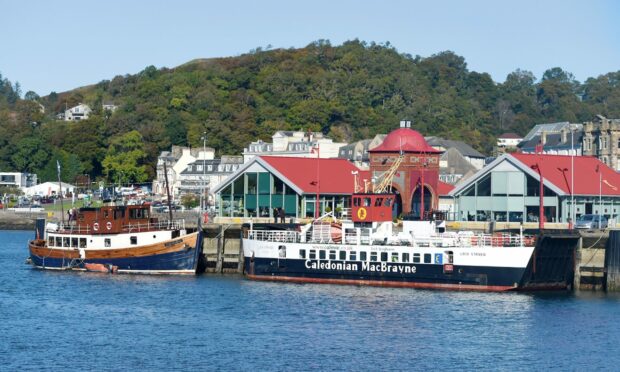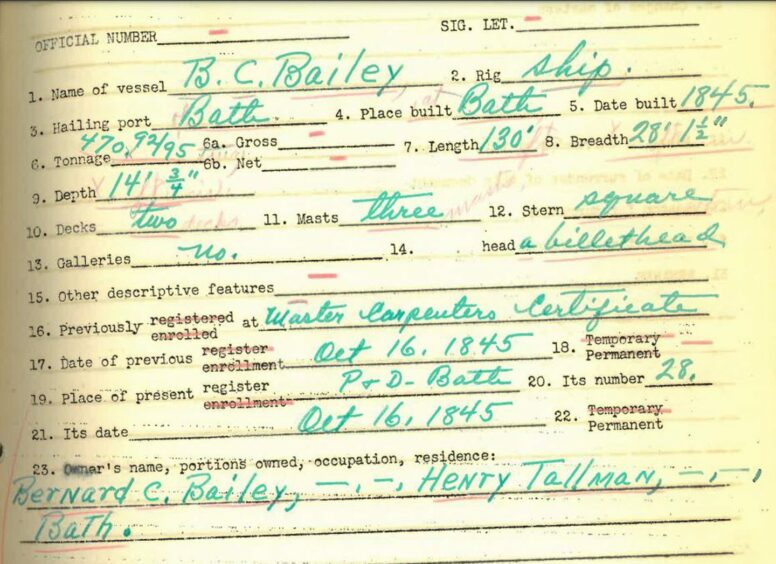It is the stuff of west Highland legends, but a local historian seems to have unearthed the truth about one tall tale in Oban.
The town is full of stories, but it seems one local historian, Neil Owen, has investigated the particular story of whether a vessel is entombed in the local pier and came up with some very interesting answers.
Mr Owen is not unfamiliar with investigating the town’s stories as he is a former policeman who in retirement has taken on telling the town’s story.
What lies beneath your feet?
The story of Oban’s boat took him halfway around the globe to the Maine Maritime Museum in New England, who helped bring all the parts of the story together.
Mr Owen said: “As you stroll around the frontage of the North Pier, perhaps dwell for a second or two on what lies beneath your feet.
“Entombed forever in a sheath of concrete and many tons of rubble and aggregate is a ship, a 471-tonne sailing ship to be precise, built of stout white-oak and hard pine from the forests of New England.
“The three-masted sailing vessel, B.C. Bailey was built in the Johnson Rideout yard on the shores of the Kennebec River, Maine, in 1845.
“The yard was one of 22 such yards, taking advantage of the lumber harvested from the abundant New England forests.
“The BC Bailey was one of a fleet of 11 ships built by Bertram Bailey and his son Samuel in the 1840s-50s.
“These were schooners, brigs and cargo sailing ships ranging from 260 to 1,078 tonnage. ”
In December 1848, the BC Bailey, with a crew of 17, was on a voyage from New York to the Clyde with a cargo of cotton, tobacco, molasses and sugar.
The ship was a comparatively fast sailing ship and had set a record of eight days for a voyage between Bath, Maine, and New Orleans.
Mr Owen continued: “The master of the ship was an experienced Captain, Ebenezer Fitts.
“On the last stage of the transatlantic voyage, the BC Bailey encountered storm-force winds and heavy seas as she emerged from the Sound of Mull. The ship was forced to haul in sail and lost steerage, being blown northwards, close into the coast of Lismore where she ran aground and was holed.
“Over the next 24 hours, despite the efforts of the crew, she foundered but did not sink and fortunately no lives were lost.”
In due course, the BC Bailey was towed into Oban Bay and her commodities off-loaded from the two cargo holds.
Vessel was abandoned by owners
A proportion of it was spoiled, however, the subsequent sale for creditors offset the immediate costs of salvage.
Mr Owen’s found out that insurance wrangles ensued and the vessel was eventually abandoned by the owners, grounded off Oban beach at low tides.
The sailing ship was then demasted and would be eventually used in a sensible innovation by the town council to extend the North Pier to enable larger vessels, including the new iron-hulled ships (bringing hordes of visitors to Oban), to come alongside.
From a civil engineering perspective, the squat, square-sided hull was ideal to be positioned, sunk and then infilled with aggregate, thus avoiding a vastly more expensive solution.
Mr Owens said: “And here she remains to this day.”













Conversation